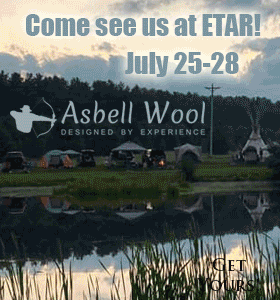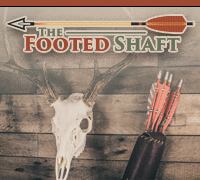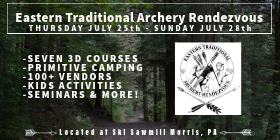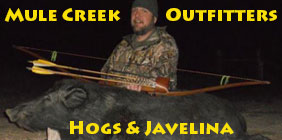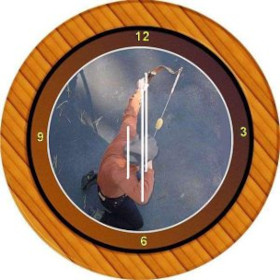Here's a good read from a deer farming website. But don't be taken aback by a deer farmers advice. Deer farmers who sell estrus/rutting urine need to create a faux rut, in order to get urine prior to the season to bottle, they know what it takes to do so. They create "ruts" in late summer by manipulating light and conditions.
Here's the line about herd structure that's important...
"As well, does which have had late fawns the previous year, may not be in optimum condition to breed in the first cycle and may not come into estrus until the second cycle, in December. When this occurs, the fawns are born late again in the following year and once established, this late breeding cycle can be difficult to correct."
Here's the whole article...
http://www.deer-library.com/artman/publish/article_32.shtml When deer breed
By James Sheret
As deer farmers, we are usually prepared for breeding far in advance of the rut, however most producers never see it happen. Perhaps it doesn't even really matter to some, but being a serious deer hunter for over 20 years, I have always been intrigued by the activities surrounding the breeding season. The best time to harvest a trophy buck is during the peak of the rut, but how do we know when that is?
We all know that deer breed in November and that fawns are born in late May or June, but to increase my hunting success, I felt compelled to pinpoint the dates and triggers more precisely. Over the years I have researched this topic and observed the deer in the wild. My findings are not based on scientific studies but more of a collection of ideas, theories and gut feelings. What I have discovered is both interesting and complex.
As deer have evolved, Mother Nature has played an important role in the timing of the deer breeding season. A properly timed rut results in a high fawn survival rate and ultimately in the survival of the species. Historically, Western Canada's climate conditions can be extreme and the deer have adapted to a narrow fawning window. When fawns are born too early, the weather conditions can still be very harsh. When fawns are born too late, they will not have enough time to build their strength for the first winter. Over the centuries, the deer have developed internal clocks to ensure fawns are born at the ideal time. This fawning window remains consistent from year to year and studies have shown that deer which are moved from one region to another will adapt to their new timing window.
The gestation period for deer is approximately 200 days and although not all fawns are born at exactly the same time, most are born within a two-week time period. So, what factors trigger the rut and the internal clocks of the deer?
I believe there are four main factors which influence the timing of the rut.
Length of the Day
Moon Phases
Weather
Herd Condition
These factors do not work independently, but when combined they trigger and determine the breeding cycle.
Length of Day
The length of the day is probably the single most overriding factor in deer breeding. It determines the ideal 200-day time frame for deer breeding and fawning. It remains constant from year to year and it becomes the deer's internal clock and calendar. The first day of summer (June 21st) has the most amount of daylight and the first day of winter (Dec. 22nd) has the least. As the length of the day changes throughout the year, the seasons also change and this triggers the deers' annual life cycle events such as shedding velvet, dropping antlers and breeding. In Western Canada this ideal time frame falls between the second and third week of November. When the deer are bred during this ideal time window, the fawns are born during the maximum survival window.
Why does light play such an important part of deer breeding? Recent studies indicate the amount of light, or lack of it, directly affects the levels of melatonin in the does. The bucks are ready to breed as early as September, however they must wait for the does to come into estrus before breeding can commence. Melatonin is a sleep inducer and in deer it stimulates the estrus levels and dictates breeding time. The more light there is, the less melatonin is produced and this, in turn, causes the does to come into estrus.
Moonlight
Daylight plays the most important role in determining the rut, however the other source of light, moonlight, also plays a role. Moonlight is the most complex and often misunderstood factor in the timing of the rut. A complete book could be written on the theories of its affect on breeding. Moonlight cannot be the single factor in determining the rut because the moon phases fall on different dates each year. Basically, the amount of moonlight tends to sway the peak rutting time from one end of the ideal window to the other.
A full moon provides more light at night, which stimulates increased deer activity, however it decreases the amount of melatonin level in the does. This lack of melatonin causes the does to come into estrus. This is the reason many believe the rut occurs right after the full moon. In ideal circumstances this is correct, however, when the full moon is later in the month, such as in 1999, the rut will occur prior to the full moon but its pulled slightly later in the ideal window. The full moon has a greater affect on breeding when it is earlier in the month than when it is later. It also determines the intensity of the rut. If the full moon falls earlier in the month, the peak of the rut will occur earlier within the ideal time window and then taper off. If the full moon occurs later, the rut will begin slower and peak towards the end of the ideal window. If the full moon occurs directly within the window, the rut will be more obvious and intense. To a hunter, this is the ideal situation. If the rut is intense, the bucks become mesmerized with only one thing on their minds. They will tend to let down their guard and become more careless in their behavior and movement. More trophy deer are harvested because of errors made on the bucks' part during this intense time, not because of the skill of the hunter.
Weather
The third factor affecting the rut is extreme weather conditions. Although this is not one of the most important factors, it can play a part. Long periods of weather that is either too warm, too cold, or too windy, can affect the rutting activity. Most breeding occurs at night when the weather is cooler and the deer are most comfortable in their winter coats. This is why it is a very rare occurrence to actually witness the breeding process.
Herd Condition
Finally, herd condition plays a role in the timing of the breeding. As deer farmers this is the only factor we have control over. Making sure the does are in the best possible condition is of utmost importance to the development of their winter coats. Without these winter coats, their chance of surviving the winter ahead is greatly reduced. As well, does which have had late fawns the previous year, may not be in optimum condition to breed in the first cycle and may not come into estrus until the second cycle, in December. When this occurs, the fawns are born late again in the following year and once established, this late breeding cycle can be difficult to correct.
In conclusion, the factors affecting the rut must all come together like pieces in a puzzle. When one or more pieces do not fit properly, the puzzle is incomplete and breeding times are altered. The biggest piece in the puzzle is the amount of light, which determines the ideal timing window. The next biggest piece is the moonlight, which pinpoints the exact time within the window. Weather and herd condition are the remaining pieces which finish the puzzle. In order to complete the deer breeding puzzle, you must have all the pieces. Under ideal circumstances, all the puzzle pieces will fit exactly. When they don't fit exactly, your herd's reproductive abilities can be adversely affected.
Deer Farmers' Information Network
www.deerfarmer.com

